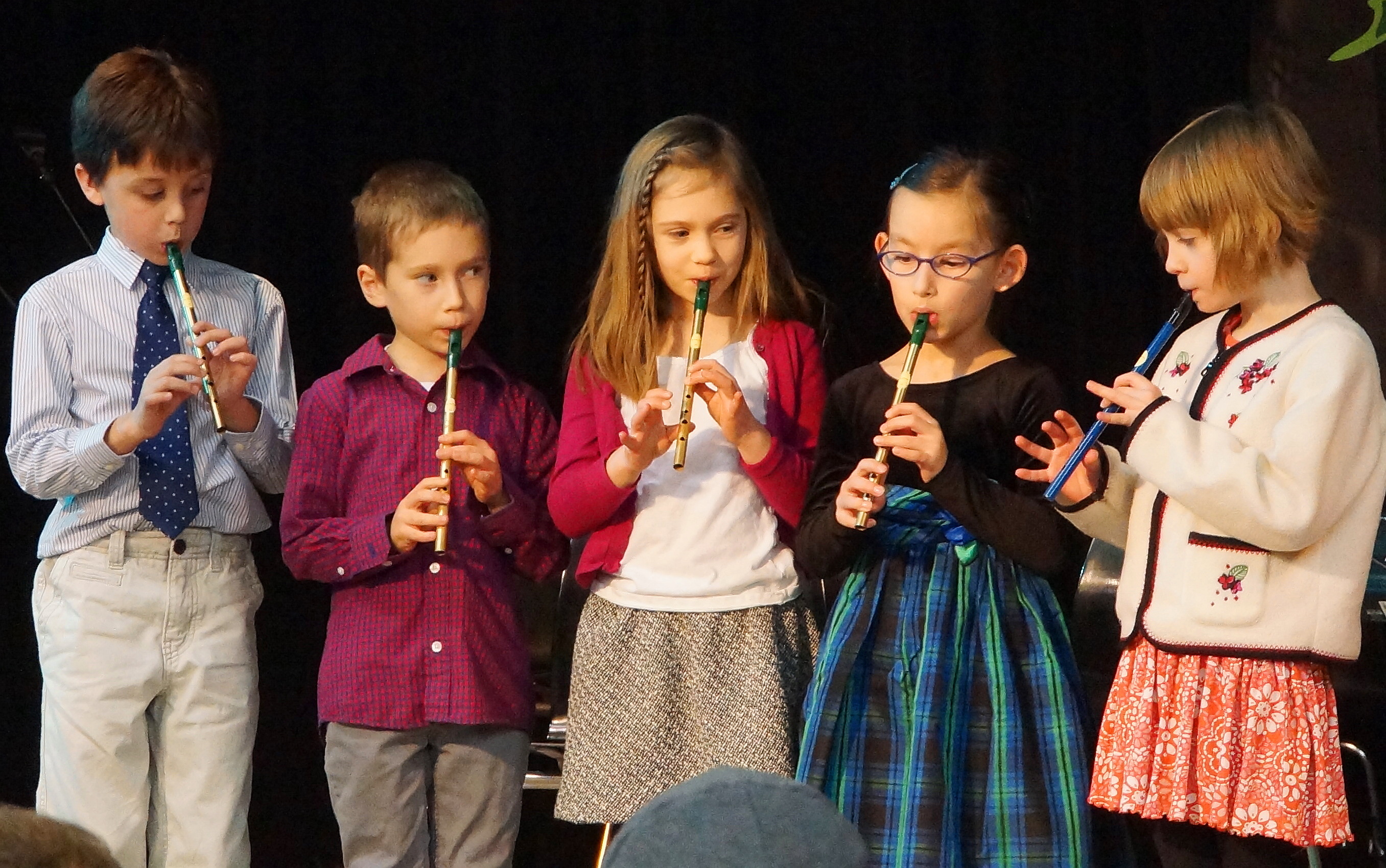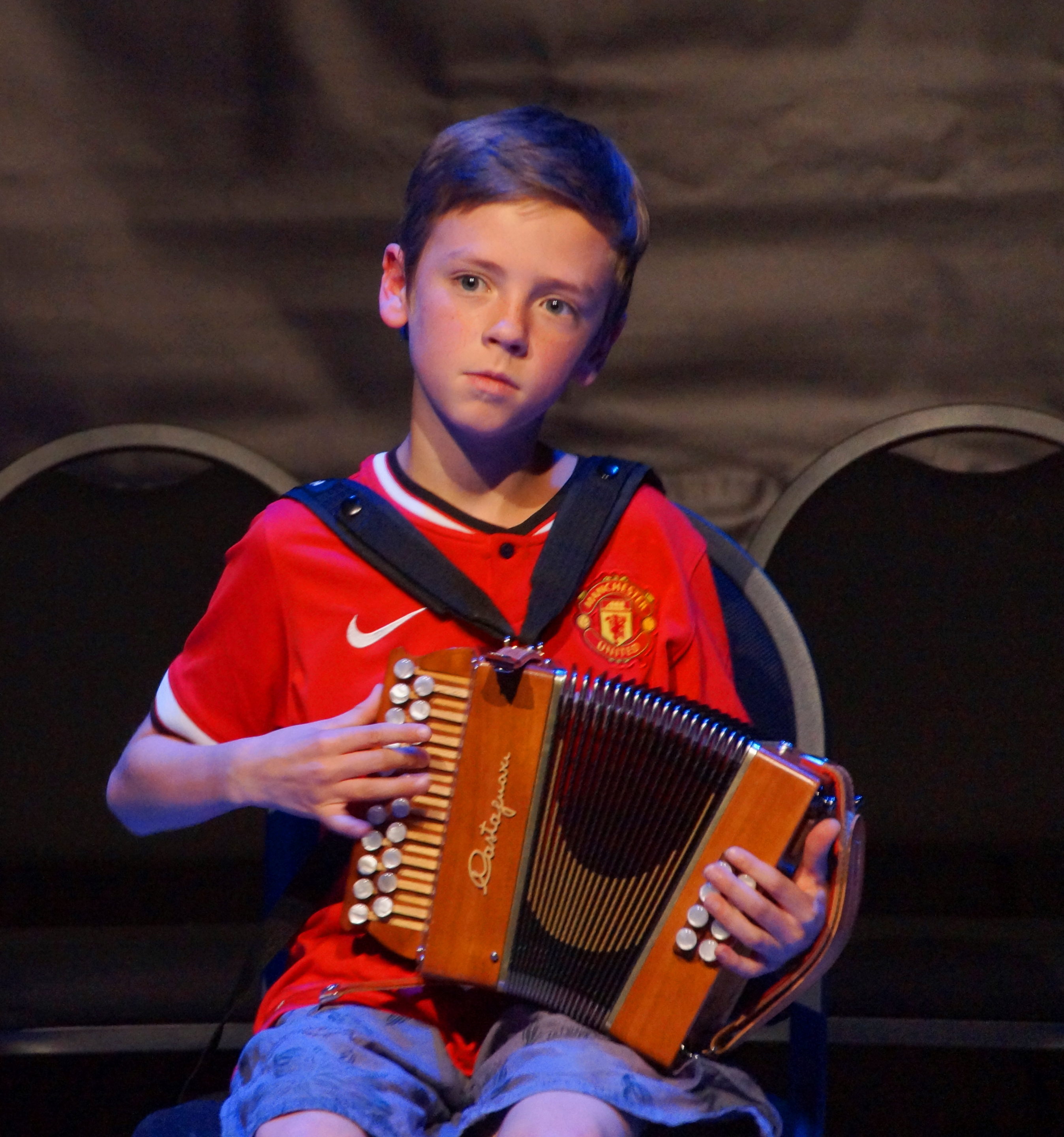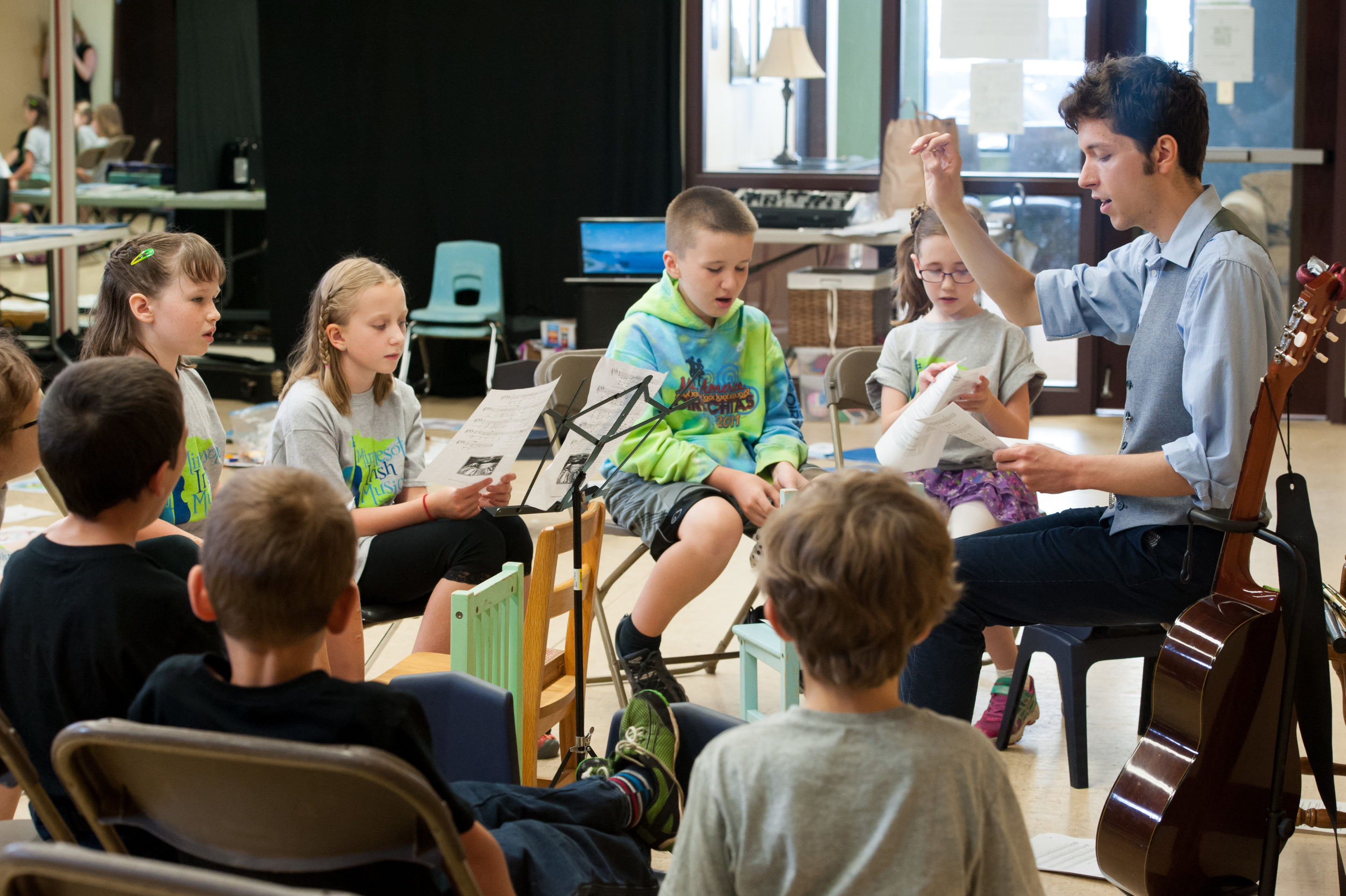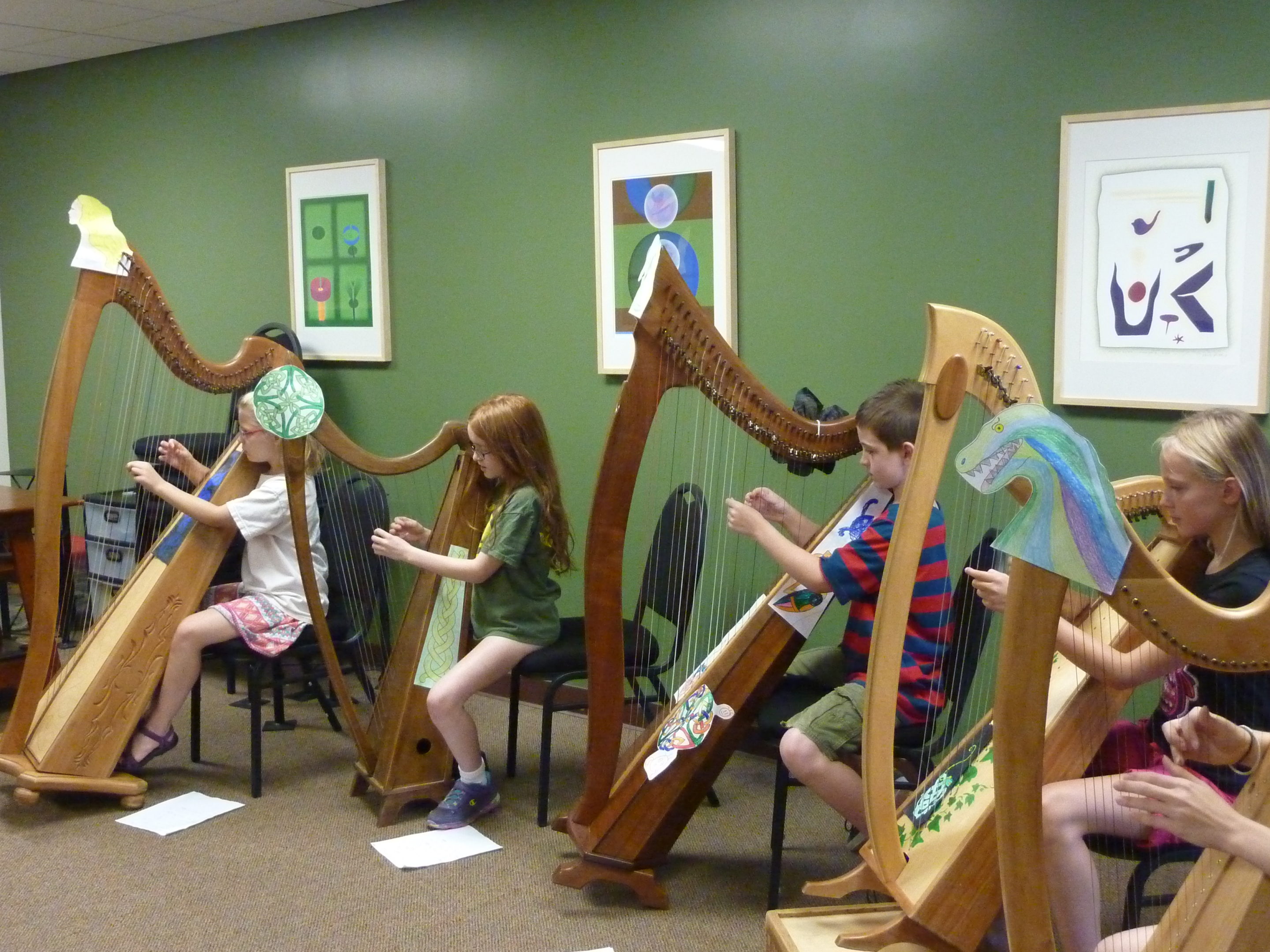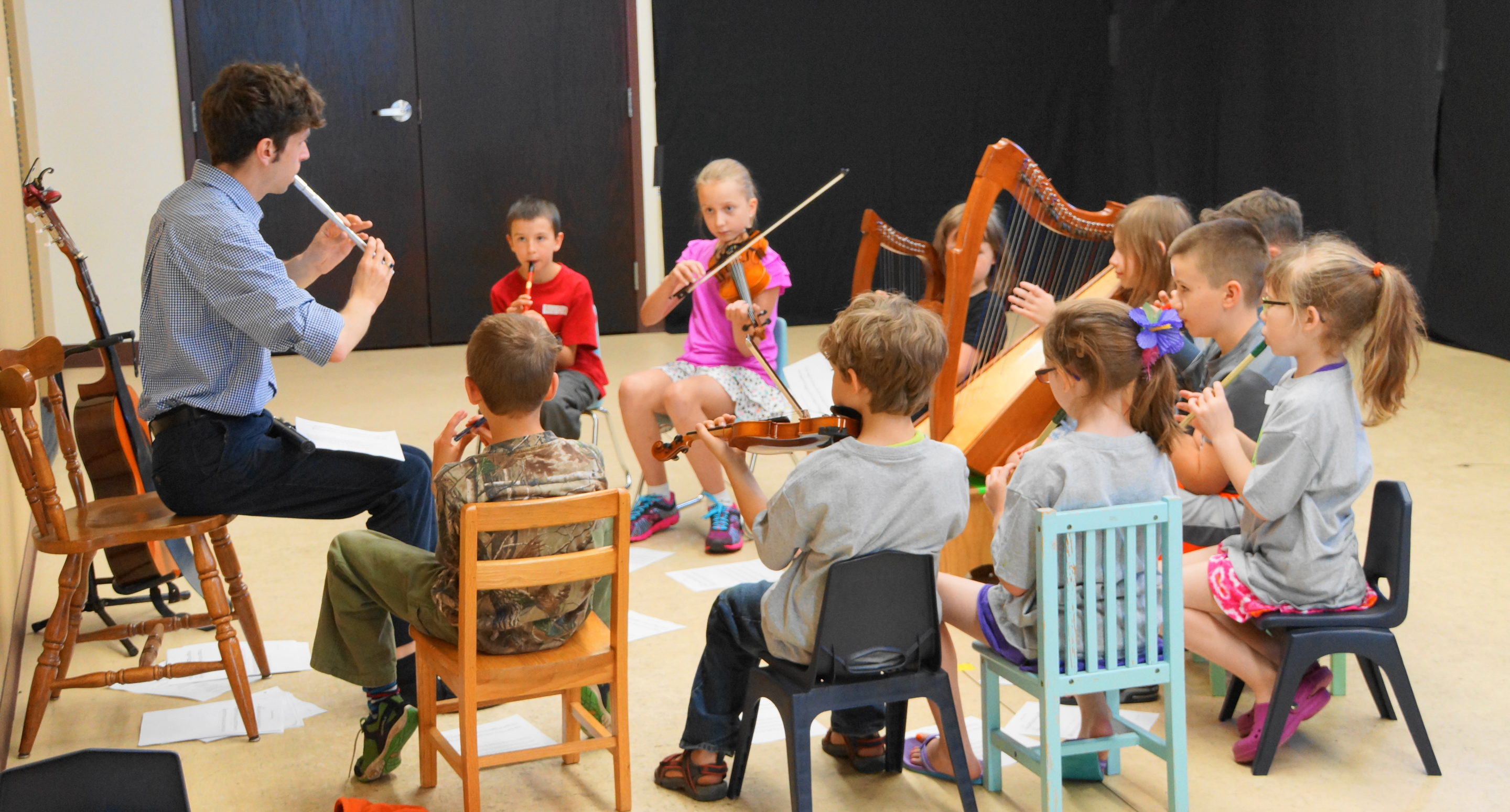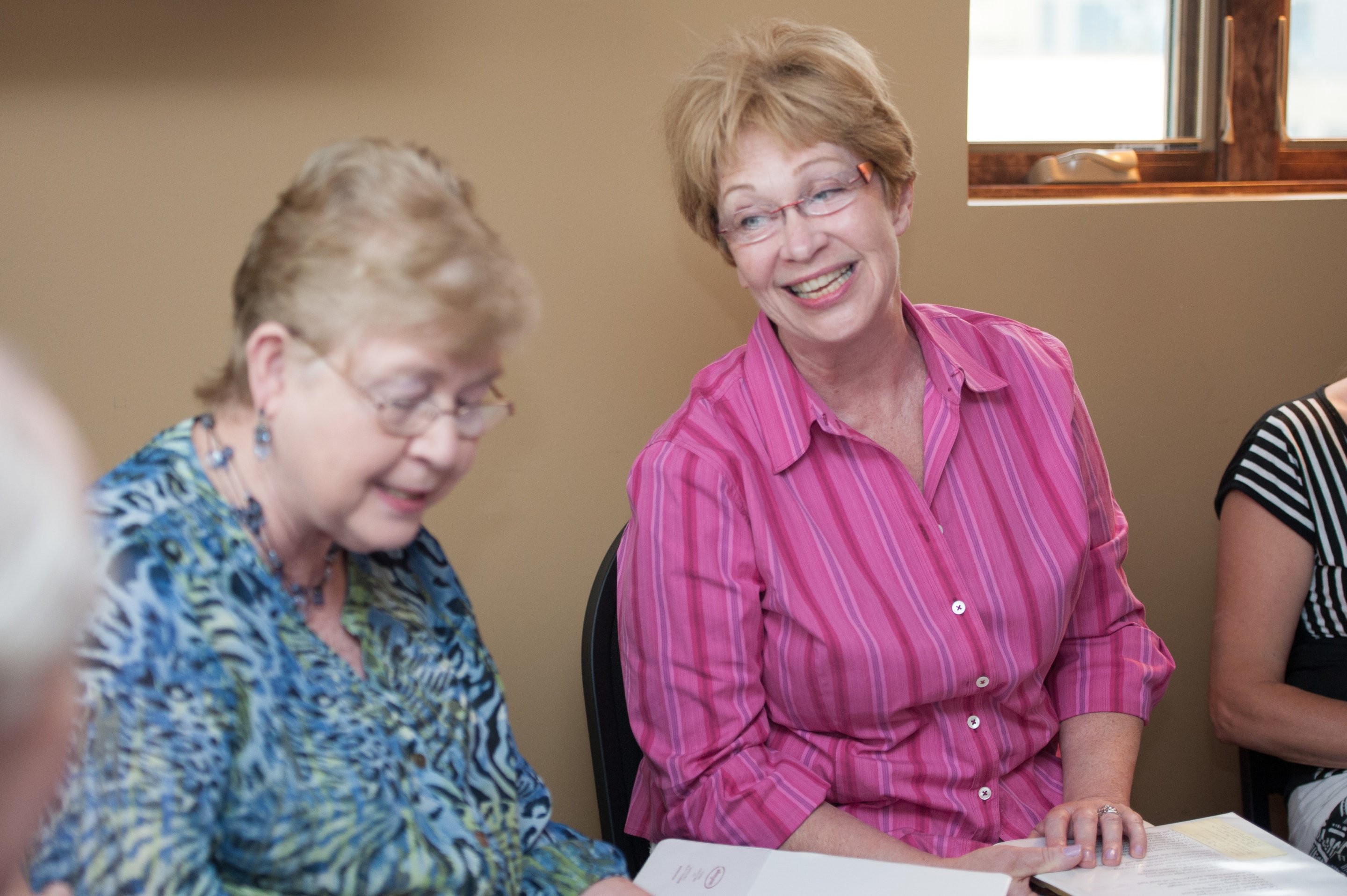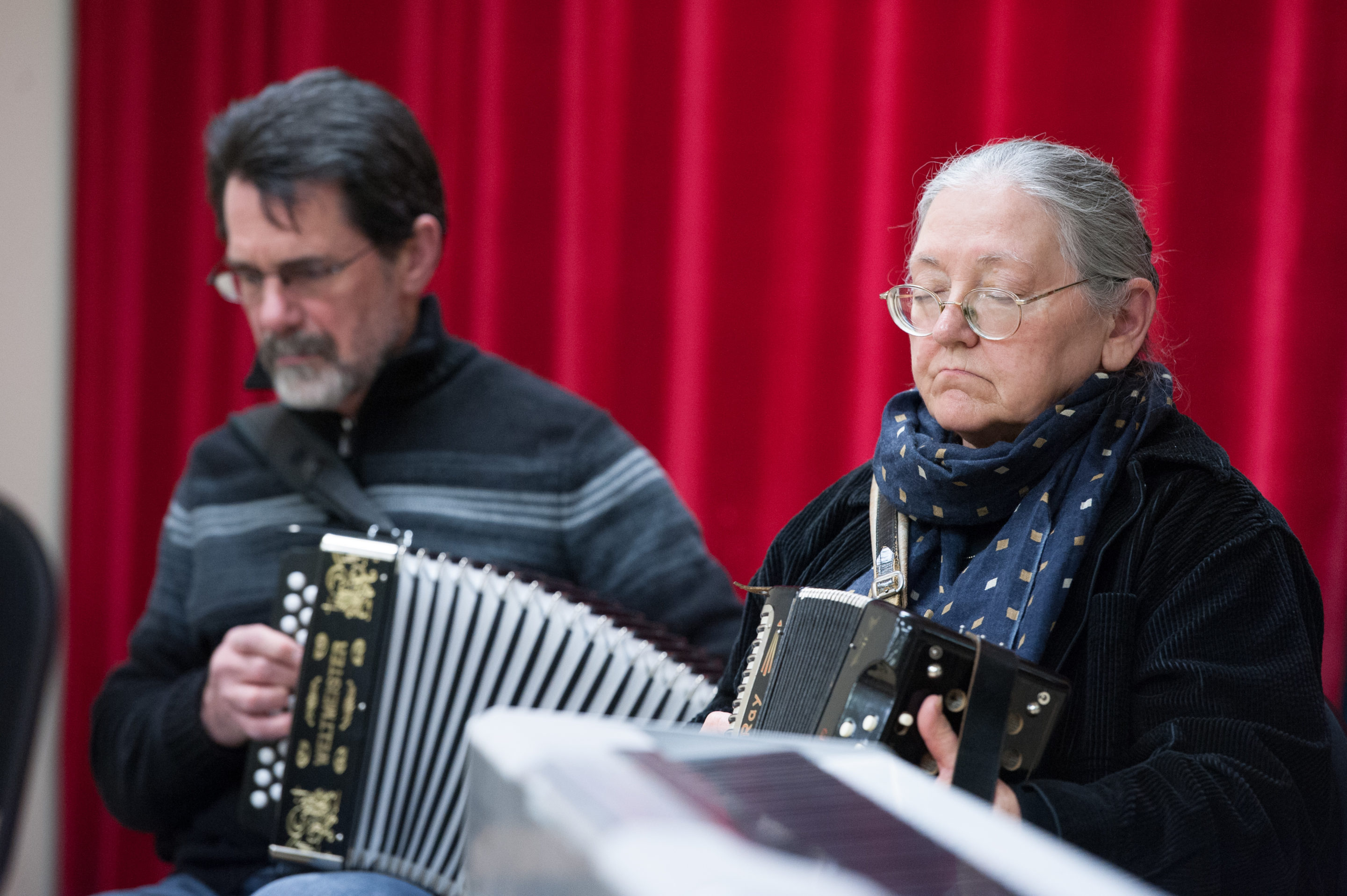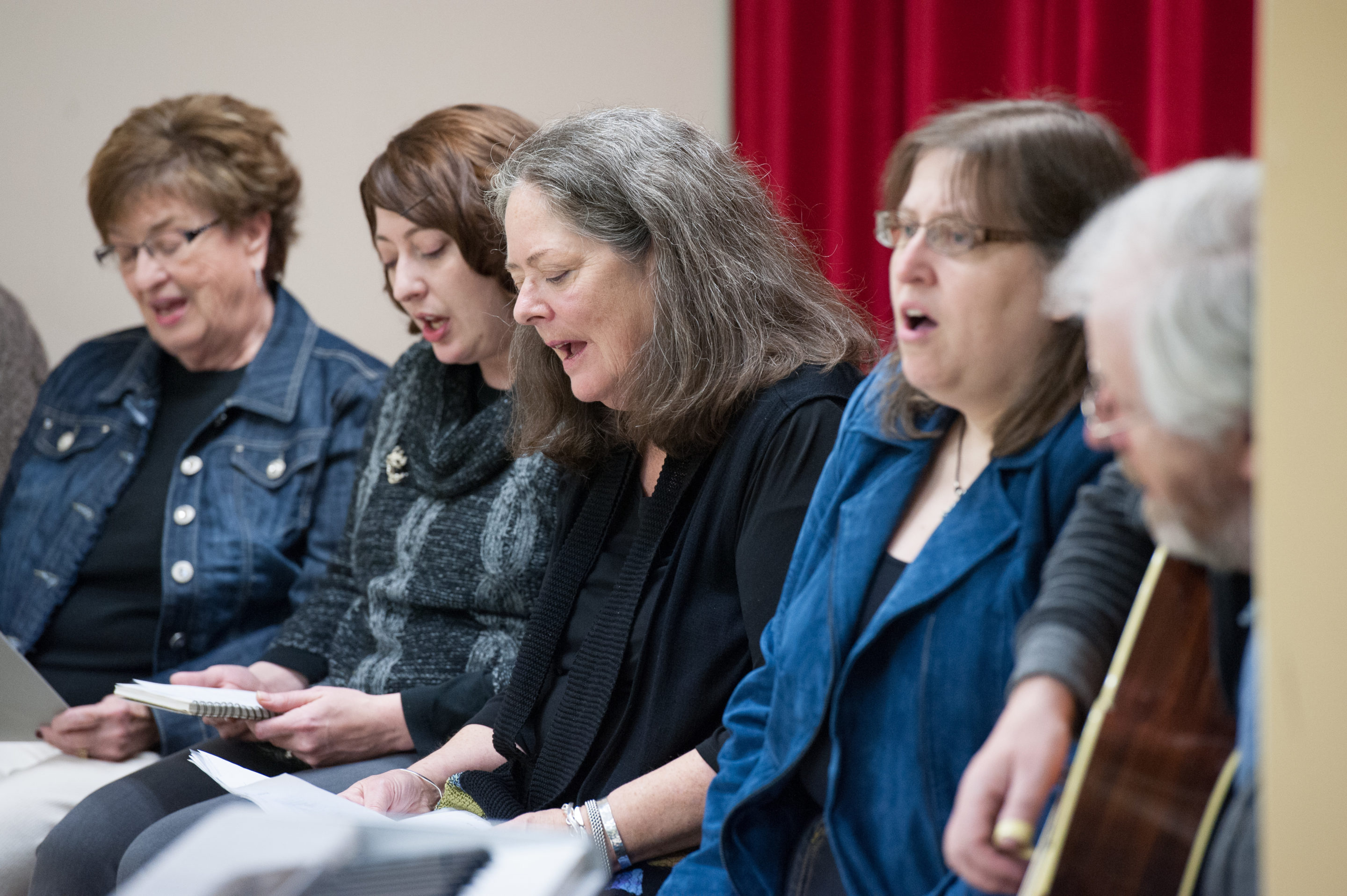Photos and video courtesy of Aja Beers, Emily Flagstad, Patrick Krekelberg and Norah Rendell
With an entry-level price tag of just $10 a pop,
it’s no wonder the tin whistle is the instrument of choice for the Center for Irish Music’s littlest learners. “It’s just the perfect, invincible instrument for little kids,” says executive director and instructor Norah Rendell. “You can step on it, your dog can chew it, and it’s nearly indestructible.”
Even before CIM’s youngest students hold their first instruments in their hands, programs like “Celtic Cuties” help put a song in their hearts, building a foundation for music-making through song and play. “‘Wish I Had a Kerry Cow’ is probably our ‘greatest hit’ with that age group, but even those silly words and movements help connect kids to the joy of music,” says Rendell, who watches those early skills play out in later years, as young musicians take on more complex musical challenges. “Music is such a complicated art form, so when kids have an early introduction to how rhythm and movement and language and melody all fit together, they have a real advantage. It’s such a treat to teach a student who has those fundamentals in place. I think all children love music if they’re exposed to it—and the better the music they’re exposed to, the more they’ll love it.”
There’s a light bulb that goes on with students when they realize playing together is what this is all about.
From the button accordion to the bouzouki, the CIM's
master instructors are fluent in 14 traditional instruments. While student enrollment in private lessons saw a 25 percent jump during the 2014-15 school year, interest in the CIM’s ensemble programs grew at an even faster clip. “It’s been exciting to see how many students are taking part in ensembles, because it’s such a big part of our mission,” says Brian Miller, who leads the Advanced Youth Ensemble. “From day one, the school has been about teaching the social context of traditional music, and showing students that Irish music works even better when we all play together.”
From the ensemble of 10-year-olds who play together every Thursday, or the traditional sessions that attract dozens of adult learners to Keegan’s Irish Pub on Sunday afternoons, Miller says coming together as a community offers lessons that can go far beyond a one-on-one instruction session. “There’s a light bulb that goes on with students when they realize playing together is what this is all about—playing tunes and sharing tunes and getting into a rhythmic groove. I feel like they get better immediately,” he says. Ensemble musicians also serve as the CIM’s most public ambassadors, fanning out from coffee shops to classrooms in the St. Paul public schools, from competitive fleadhs to the Irish Fair of Minnesota to share their love of traditional music.
Whether it’s taking up an instrument for the very first
time, singing pub songs with a circle of friends, or learning the language and mythology of Ireland, adult students have become a growing part of CIM’s enrollment in the past 5 years. “When a person picks up a fiddle at the age of 50, you may wonder what are the chances they’re going to progress?” says Dáithí Sproule, an internationally-regarded Irish musician who teaches children and adults at the CIM. “I was skeptical myself at first, but over the years, I’ve seen the exceptional progress people will make when they begin pursuing what they love.”
With a centuries-deep catalogue of songs and stories, Sproule says traditional Irish music has the power to engage students across a lifetime. “The further into the music you go, the wider it becomes. From the outside, when you look at people playing a jig, you mightn’t realize that what’s really drawing them together is this fascination with the music—it’s something mysterious, you can’t even name it. That exploration has been vital for the Irish tradition, and the serious pursuit of this jolly music.”
The Old Copperplate
The New Copperplate
With downloadable sheet music and digital recordings like these, CIM students rely on a common repertoire when they come together to learn as a community.
Since 2010, instructors at the Center for Irish Music
have come together to select a common repertoire—a set list of beginning, intermediate and advanced tunes that become a shared language for students of every age to learn from and rely on. The digital recordings and sheet music that back up the common repertoire have become some of the most accessed resources on CIM’s website.
While the common repertoire draws internet visitors from around the globe, it really comes in handy at CIM celebrations, when students play a parting reel at the end of their recitals, or perform for the guests of Éigse, CIM’s annual fundraising gala. During the sold-out Master Artist Concert at the Minnesota Irish Musicians Weekend in June, more than 20 CIM students and instructors shared the stage with such master artists as Joanie Madden, Mick, Louise and Michelle Mulcahy, and Sean Clohessy to close the performance with “Old Copperplate” and “New Copperplate,” two reels on CIM’s common repertoire. “That mix of generations sharing their love of the music is really the heart of Irish music, and seeing these very young students playing alongside these master musicians is quite moving,” says Rendell. “It may look like everyone’s improvising, but in fact everyone is playing the same tune. It really is an incredible feat of collective intelligence – a whole group of individuals committing time to learn music they will play together while keeping the tradition alive.”

